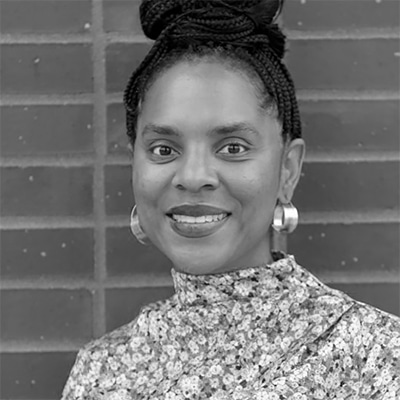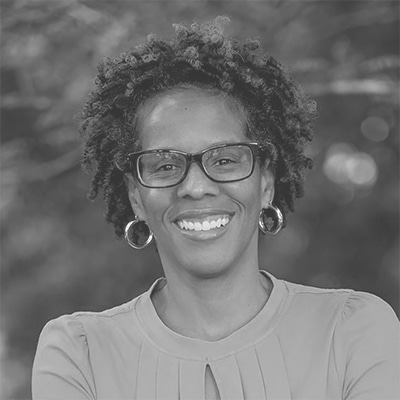June 1, 2022
Meghan MacRae
Deconstructing The System: How Women of Color are Transforming Educational Leadership
11 minutes

“We can’t talk about healing without talking about the wound.”
~ Dr. Jamila LyiscottOn May 12, 2022, ThoughtExchange’s CMO, Lauren Kelly, sat down with a panel of education leaders to discuss their unique leadership experiences, insights, and challenges as women of color.
Dr. Talisa Dixon, Superintendent/CEO, Columbus City Schools, OH; Dr. Teresa Lance, Assistant Superintendent of Equity and Innovation, Elgin Area School District U-46, IL; and Dr. Anna Stubblefield, Superintendent, Kansas City Kansas Public Schools, KS, shared their paths to leadership as well as their ideas for systemic change with our attendees.
Mentorship and support

“Veteran teachers wrapped their arms and expertise around me, and it’s because of so many of them that I stand where I am today.”
~ Dr. Teresa Lance
Deconstructing the system

“Inequities already existed prior to COVID—but now everybody’s hurting. Some folks say, ‘Oh, I can’t wait until we get back to normal.’ Whose normal? No, don’t go back to normal, because that hurts our kids.”
~ Dr. Teresa LanceFor some people, the pandemic exposed new issues of inequity in our educational systems—but from the perspective of these three leaders, inequity is nothing new for Black and Brown students and communities. With the cover ripped off by COVID-19, districts around the country put measures into place to address the lack of access to technology, internet, and food security that many of their students had lived with for years. To explain their sudden response to pre-existing inequities, Dr. Lance mentions Derrick Bell’s theory of interest convergence, whereby “Black people achieve civil rights victories only when white and Black interests converge.”
For all three leaders, the education system’s pandemic response revealed an important insight: that systems can change—and change quickly. Dr. Stubblefield explains that “with the pandemic, every school system in America shifted in a heartbeat. If we had discussed making changes like this [before the pandemic], we all would have talked about how we need to plan for five years. Now we know that systems can change more quickly than we thought.” Dr. Dixon emphasizes this idea, stating, “We need to deconstruct the system. And we need policy, our presence, and our voice to make sure it’s done.”
Addressing bias in teaching and leading

“Pedagogy, regardless of its name, is useless without teachers dedicated to challenging systemic oppression with intersectional social justice.”
~ Bettina L. Love, We Want to Do More Than Survive: Abolitionist Teaching and the Pursuit of Educational Freedom, Beacon Press, 2019Dr. Dixon, Dr. Lance, and Dr. Stubblefield are leading at an unprecedented time, and they’re looking for ways to ensure they don’t repeat the mistakes of the past. To address inequity effectively, Dr. Lance highlights the importance of acknowledging bias in the way teachers and administrators interact with students of color.
Dr. Lance asked her fellow panelists to look into their data around exclusionary practices and suspension of Black and Brown students, observing that both are on the rise again now that schools are back to in-person learning. She explains that for real equity to happen, staff and administration must understand and be accountable for how their biases affect their students. Any programs to support student well-being need to consider the realities of the racism and social injustice that marginalized students deal with inside and outside the classroom.
“We talk about the trauma that our Black and Brown babies hold. What about the trauma our teachers and administrators put on our children?” she asks. “We’re putting SEL (Social Emotional Learning) in schools to address students’ trauma, but you can’t package your way out of this. As Dena Simmons says, ‘Don’t let SEL be White Supremacy with a hug.’”
Building a better future with community input
Trust is key to making the necessary systemic changes to ensure equitable education for all students. Dr. Dixon feels that COVID-19 revealed a trust gap between communities and leaders in many districts. “Do people trust us to make the right decisions?” she asks. For systemic change to happen, leaders need to continue to hear every perspective in their communities and build trust by acting on their needs.
Similarly, Dr. Lance emphasizes hearing from the most marginalized students and families in communities to mitigate bias and humanize the data many leaders draw from. “Tell the stories of our most marginalized students and families,” she explains. “We need to center them in order to do the work. We look at data from a biased lens. What are our students and staff saying they need?”
As someone whose educational experience included many supportive and inspirational teachers of color, Dr. Stubblefield keeps her sights set on making sure her students feel the way she did as a child. “I want our students to leave here with more positive memories and experiences than negative ones,” she tells her staff regularly. She explains that using the pandemic recovery funding toward equity initiatives will ensure they have a better school experience.

Setting the stage for future leaders
All three leaders stress how important it is to provide the same support they received to the women coming up behind them. Paving the way for more women of color in educational leadership means providing a supportive environment for students, ensuring their families have the resources they need, and advocating for their teachers and administrators who are looking for that same mentorship and support.
Watch the event replay to get the full depth of insight that these inspiring women shared with our attendees. We’ll leave you with these jewels for now:










